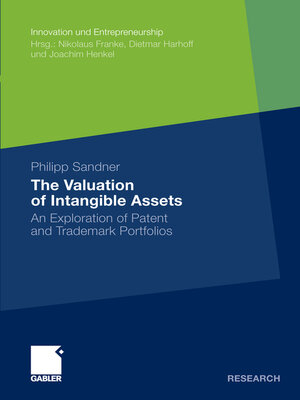The Valuation of Intangible Assets
ebook ∣ An Exploration of Patent and Trademark Portfolios · Innovation und Entrepreneurship
By Philipp Sandner

Sign up to save your library
With an OverDrive account, you can save your favorite libraries for at-a-glance information about availability. Find out more about OverDrive accounts.
Find this title in Libby, the library reading app by OverDrive.



Search for a digital library with this title
Title found at these libraries:
| Library Name | Distance |
|---|---|
| Loading... |
Companies need intangible assets such as knowledge and brands to develop and to sell new products. Although intangibles become increasingly important, formal reporting procedures to reliably assess their monetary value do not exist. In his dissertation, Philipp Sandner aims at examining portfolios of intellectual property (IP) rights to assess the market valuation of companies' intangible assets. Specifically, patents and trademarks are used to approach technology-based and market-based assets, resp- tively. He applies econometric methods to a unique dataset which he assembled specifically for the purpose of this thesis. The thesis consists of four main chapters. First, Philipp Sandner presents in some detail the European trademark system. Research in business administration and e- nomics has rarely relied on trademark data, and the complexity of the institutions is presumably one reason for the current dearth of studies. The first chapter in this study creates a sound foundation for the subsequent chapters. It is also helpful to other researchers who wish to understand the trademark system. The next chapter analyzes the contribution of R&D, patents and trademarks to companies' market value. Philipp Sandner is one of the first authors to quantify the impact of different types of intan- bles. In another chapter he scrutinizes trademark portfolios in-depth and explores different filing strategies employed by companies. In the final chapter, he analyzes patterns of stock movement and traces them back to the effect of technology- and market-based assets.







